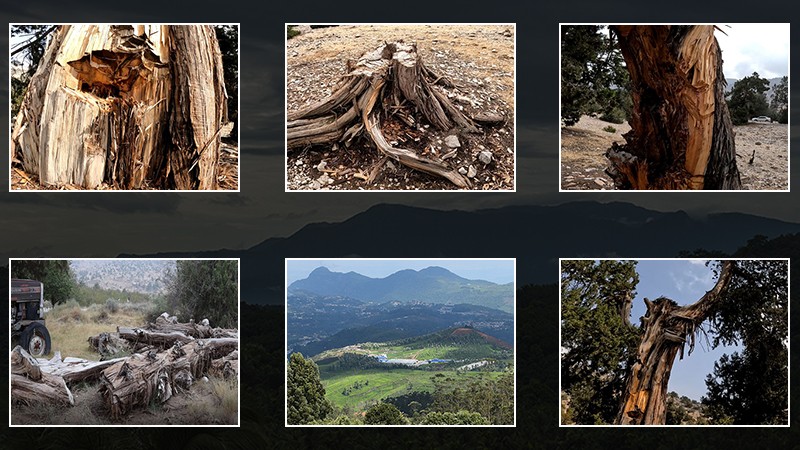 Kerala And Balochistan
Kerala And Balochistan
Natures Hints In Kerala And Balochistan: Road To Extinction
Human greed is causing destruction of forest covers in India's Kerala and Pakistan's Balochistan exposing the regions to future climate disasters. Sai Kiran from from India's Thiruvananthapuram and Tanveer Ahmed from Quetta in Pakistan report in a cross-border journalism project
The southernmost state of Kerala in peninsular India is at least 2,300 km far from Balochistan province in Pakistan. What links these two regions which are different in every aspect- be it geographical, climatic or political? The answer is the exploitative nature of human beings, who are at war with the environment, more out of greed than necessity, without realising what is in the offing – despite nature sending several visible signs.
Both India and Pakistan are victims of climate change. Balochistan province in Pakistan and Kerala in India are faced by environment issues because the forests in both the regions are cut by the population for encroachment and fuel.
Two sites, which have been recognised by UNESCO as heritage sites, are slowly facing the wrath of nature, as human exploitation is at its peak. The famous Western Ghats run along the western coast of peninsular India for 1,600 km and touch six states including Gujarat, Maharashtra, Goa, Karnataka and Tamil Nadu, covering the whole length of Kerala and ending at Marunthvazh Malai in Kanyakumari district of Tamil Nadu. Of these six states, the state of Kerala (which has the highest population density among Indian states) alone accounts for 40% of the ghats, with maximum human agglomeration on the highly ecologically fragile mountain range.
Meanwhile, hundreds of kilometres away in Balochistan, another region recognised by UNESCO is facing a similar fate. Almost 100 km away from Balochistan’s capital city of Quetta is Asia’s biggest juniper forest in Ziarat. Kabir Khan, 50, keeps his guest room warm with the traditional stove fuelled by the trunks and branches of juniper trees. Ironically, the ceiling of the same room where he lights the tree for fire is made up of the planks of the very same tree. In effect, like for thousands of others, the juniper tree is everything for Kabir Khan too.
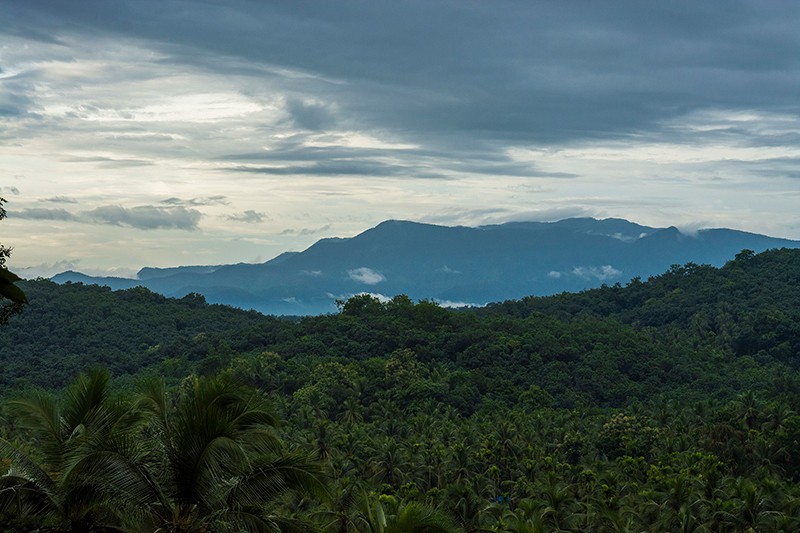 Rainforest cover of Western Ghats in Kerala. (Image by Shagil Kannur/Wikipedia Creative Commons)
Rainforest cover of Western Ghats in Kerala. (Image by Shagil Kannur/Wikipedia Creative Commons)
On 6 August 2020, a small housing colony – if at all they can be called houses – where the workers of a private tea plantation situated at Pettimudi on the slopes of of the Rajamalai hills in Idukki district, the majority of which is situated on the ghats, woke up to see gushing water and mud flowing down from the hilltops.
The heavy landslide that engulfed the area in a matter of a few seconds, took 70 lives out of 81 people whose world was those one-room ‘houses’ in a few lanes. The Pettimudy disaster was not the first one. The state of Kerala had witnessed the biggest flood in over a century just two years ago in 2018 – taking the lives of 483 people, of which 152 died in the landslides. The floods caused heavy devastation in the state, and the losses were estimated at Rs 31,000 crore (Rs 310 billion).
On the other hand, Ziarat district is at an altitude of 16,000 feet above ocean level, making it one of the coolest regions and locally people call it Tanda—the cold Ziarat. Winter months are unbearable here. The village Chautheer is far away from the main city, covered in the woods shielded from the forest guards and other arms of the government. This secluded village – distant not only from enforcement agencies, but also the welfare schemes that are supposed to reach the local masses – forces Kabir Khan to fell the juniper trees during the winter like other villagers.
“We cut these beautiful trees out of necessity. The harsh weather and the lack of an alternate fuel are forcing us to cut them down. These trees are also cut down and transported to other districts in large numbers,” he said.
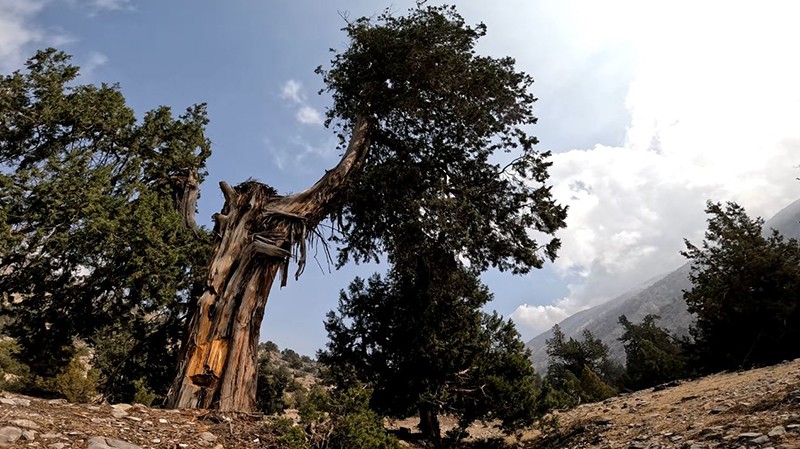 Deforestation in Juniper forest in Balochistan. Image by Tanveer Ahmed
Deforestation in Juniper forest in Balochistan. Image by Tanveer Ahmed
The year before – 2017 – saw the Ockhi cyclone that devastated both lives and properties as well as the popular belief that the state was relatively safe from cyclones. In another extreme, the state saw the harshest draught in 120 years despite the fact that as much as 29.65% of the total area of the state being green forests, of which 9195.735 square km are reserve forests, 291.575 square km are proposed reserves and 1905.476 square km are vested forests and ecologically fragile lands.
Environmentalists and those who oppose the lopsided developmental vision have been asserting that these are repeated alarm bells to understand what awaits us in the future ahead. Still, the number of granite quarries is steadily going up. There are already 610 legal quarries functioning in the state, with at least three to four times of this number in the illegal category.
A census undertaken in 2017 shows that the population of Ziarat is 160,000 and the total area under the forest cover is 101, 000 hectares. The Junipers are slow-growing trees, and some of them are recorded to have aged above 1,000 years. As per the experts, Juniper replantation is impossible. The Juniper trees fall victim to not only the local population, who have no other alternative to fight the winters, but these trees are forced to make space for apple plantations, which is a more lucrative business.
The only act that exists here is the British colonial-era act for forest regulation, which is too weak to punish the culprits involved in cutting the Ziarat Juniper trees. Though the government passed the Balochistan Forest Act, 2022, it is yet to be enforced
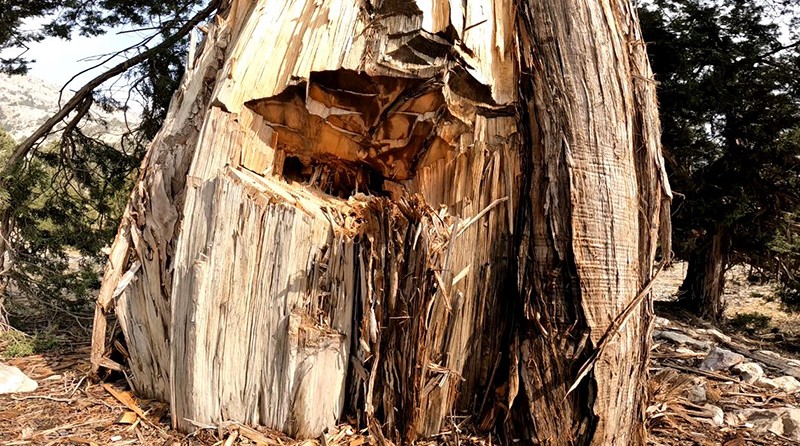 Deforestation in Juniper forest in Balochistan. Image by Tanveer Ahmed
Deforestation in Juniper forest in Balochistan. Image by Tanveer Ahmed
Though the local law is in force that punishes those who are felling the Junipers, the existing penalty is too paltry to have any deterrent effect over the law breakers. Those caught red-handed need to pay a meagre penalty of 5,000 PKR (US$ 18), which is another reason that paves the way for the possible death of the Ziarat Juniper forest.
The government is still lagging far behind in taking concrete steps to address the serious issues that are being cited in the intergovernmental panel report on climate change, says Kerala’s opposition leader V D Satheesan, who has taken up several environmental issues in the past. “The state has become a place which is susceptible to drastic climatic changes since 2015.
It is yet to learn and take the necessary steps despite thousands of landslides have been reported from Western Ghats. Even after the 2018 floods, the government sanctioned more than 200 quarries in the state. This lopsided vision about development will have to be redrawn at the earliest before it is too late,” he said.
In a state like Kerala of which 54.7% of the area is under forest cover, as much as 12415.896 acres of forest land in the state are under encroachment and are under court litigation in various courts across the state, as per the figures of the Forest and Wildlife Department. As much as 43727.89 acres of forest have been destroyed in wildfires in the last one decade. These are just the official figures, and the actual figures are many times this number.
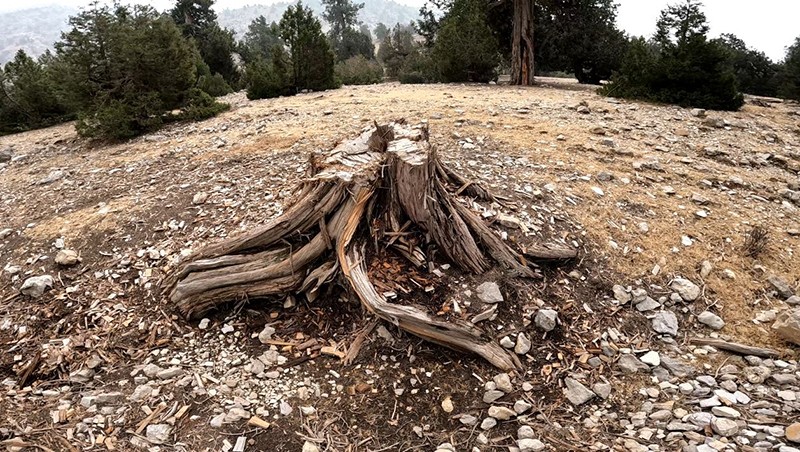 Deforestation in Juniper forest in Balochistan. Image by Tanveer Ahmed
Deforestation in Juniper forest in Balochistan. Image by Tanveer Ahmed
Nevertheless, the Indian government is presenting a rosy picture of forest conservation. As per the statistics presented before the legislative assembly, the extent of area under the forests in the state have increased in the last one decade. Between 2011 and 2019, the total area under forest has increased by 210.5826 square km.
While it was 11309.4754 square km of forest in 2011, it increased to 11520.058 square km by 2019. The increase in the area under the forest cover is mainly being achieved by including mangroves, porambokes (no man’s land) and areas that have been earmarked but are yet to be declared as reserve forests etc, under the category of forests.
Viju B, senior environment journalist and author of the book Flood and Fury: Ecological Devastation in the Western Ghats, says: “There is hardly any awareness regarding the need to conserve the Western Ghats. The communities are more influenced or even threatened by the local politicians who have vested interests in implementing the ‘developmental projects’.
"These point out the urgent need for the governments of six states along the Western Ghats- Kerala, Tamil Nadu, Karnataka, Goa, Maharashtra and Gujarat- to come together and chart a comprehensive future plan to protect the 1600-km long region."
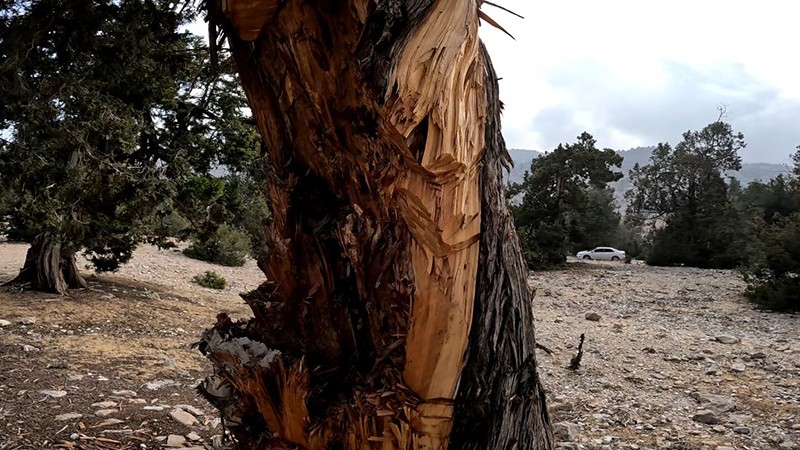 Deforestation in Juniper forest in Balochistan. Image by Tanveer Ahmed
Deforestation in Juniper forest in Balochistan. Image by Tanveer Ahmed
The lack of a strong law is always a strong deterrent against protecting any rare species, whether trees or animals. The only act that exists here is the British colonial era act for forest regulation, which is too weak to punish the culprits involved in cutting the Ziarat Juniper trees. Though the government passed the Balochistan Forest Act, 2022, it is yet to be enforced. It is evident from the fact that the government has deployed only 200 employees for the protection of the vast forest region.
“The new Forest Act by the Balochistan assembly is still under making, and the rules are yet to be framed”, says Syed Ghulam Muhammad, the chief conservator of Ziarat Juniper forest. “The government research shows that many areas of the forest are becoming regenerating areas, if these new plants are protected then they can naturally grow,” he adds, as a silver-lining statement.
Earlier, the winters used to be so harsh that the people of Ziarat would migrate to neighbouring Harnai and Sibbi, but global climate change started impacting these regions as well. The changes in climatic conditions forced the people to stop their seasonal migration and they started to cut the Juniper trees for survival, Kabir Khan. Felling these precious trees begins from November when the winter sets in, sometime goes up to March or April, which would mean that a substantial number of trees are lit in the fireplace in these six months.
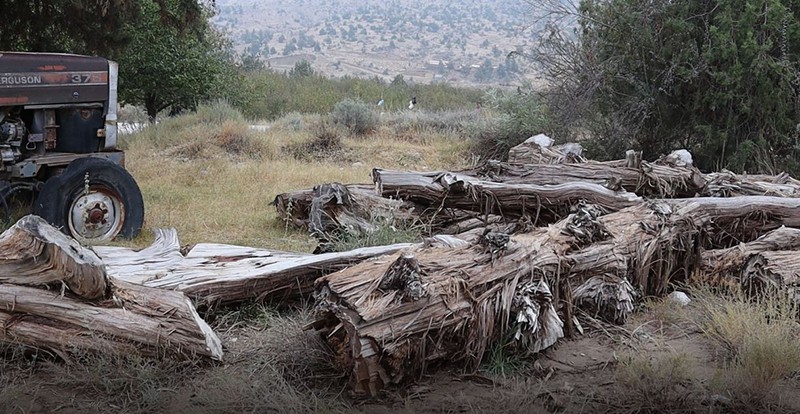 Deforestation in Juniper forest in Balochistan. Image by Tanveer Ahmed
Deforestation in Juniper forest in Balochistan. Image by Tanveer Ahmed
The Ziarat Juniper forest has been declared as a “bioreserve” region by UNESCO and they are also living “fossils.” Sanaullah Tareen, 40, a local resident and activist for the forests and social rights, blames the government for not ensuring adequate gas supply as fuel during these winter months, so that the public refrain from depending on these fossil fuels.
“People are forced to cut down natural wealth. If they are provided with an alternate fuel for surviving these winter months, none will harm these trees. Along with this, the law also should be tightened. Unless we act quickly without wasting any further time, the Juniper will be extinct from here forever,” he says.
Along with human intervention, another factor is also contributing to the extinction of the Juniper trees. The parasite attacks on these trees are also taking a heavy toll on them, and healthy Junipers have now become a rare phenomenon. These situations create a grim future for Juniper trees.
These trees would grow only in cold weather. Dr Shazia Saeed, professor at the University of Balochistan who has done extensive research on the Ziarat Juniper forest, says: “When Pakistan is facing a drastic climate change, these trees are facing a natural extinction too,” “The government should also fence the regenerating forest trees so that this precious vegetation is protected."
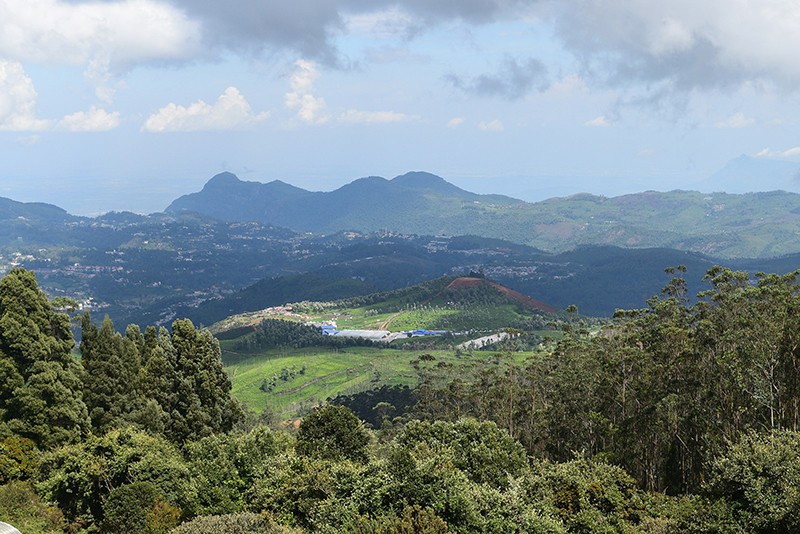 A panoramic view of Western Ghats in Kerala. (Image Wikipedia Creative Commons)
A panoramic view of Western Ghats in Kerala. (Image Wikipedia Creative Commons)
Governments everywhere claim that they are doing the best. But drawing the line of demarcation between human encroachments out of necessity and greed is what is immediately expected out of the government, along with ensuring pro-environment welfare schemes so that the people and nature coexist peacefully. And this must be done before environmental degradation leads to larger dangers – which nature has hinted at multiple times.
(This story was part of a cross-border reporting workshop organised by the US-based East-West Center. IBNS-TWF is a media partner to disseminate the reportage.)
Top Headlines
-
Environment
From Dust to Life: How Tal Chhapar Became Indias Grassland Revival Blueprint
December 18, 2025
-
Environment
From Nets to Lifelines: The Rising Whale Shark Rescue Movement Across Indias West Coast
November 29, 2025
-
Environment
Indi Setu: Wildlife on the Brink: Can We Rewild a Warming World?
October 25, 2025
-
Environment
SonaSPEED motors power NASAISRO synthetic aperture radar mission
August 01, 2025
-
Environment
How green is my city
July 01, 2025
-
Environment
India's River Dolphin: Clear And Present Danger
May 28, 2025
-
Environment
South Kashmir The costs of coexisting with predatory wildlife
May 12, 2025
-
Environment
Sariska Tiger Reserve: A maharani recognised
May 02, 2025
-
Environment
Arunachal Pradesh: Retracing a century-old biodiversity in Siang Valley
April 03, 2025
-
Environment
Toxic air and smog choke Delhi as experts at COP29 in Baku warn how dragging feet on fossil fuel reduction can cause catastrophe
November 19, 2024

